Trying Out The Altra Lone Peak 4 Trail Running and Hiking Shoe
Table of Contents
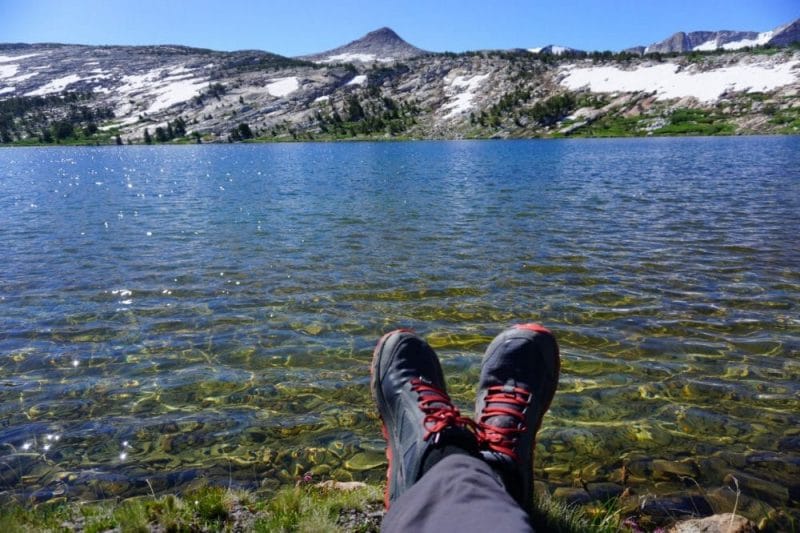
Affiliate Disclaimer: The Following article contains Amazon affiliate links. This means that if you click on a link, and make a purchase, Hike The Planet! makes a commission. It’s a win-win, when you think about it. You get a sweet new pair of Altra Lone Peak 4s, and I get to eat food again.
By far, the Altra Lone Peak 4 is one of the most common shoes that I’ve seen worn by hikers. If there is one thing that day hikers, backpackers, thru hikers, and trail runners all have in common, it’s that they all trust the Altra Lone Peaks to get them from point A to B.
The low weight, snug fit, and breathable design makes the Altra Lone Peaks a hit on the Thru Hiking circuit. I haven’t done much thru-hiking as of late, but I can understand why. With the inclusion of a gaiter trap, and other hiker friendly features, it seems that Altra knows their market well.
I picked up a pair of Lone Peaks this past August, just before a three day backpacking trip of Yosemite’s High Sierra Loop. Impressed by the comfort they afforded, I have adopted the Altra Lone Peaks as my new favorite pair of shoes.
They’ve even inspired me to give trail running a serious attempt.
The Good
- Lightweight
- Relatively Inexpensive
- Comfortable
- Surprisingly Good Grip on Rock Slabs
- Great for Hiking, Backpacking, and Running
- Rock Plate protects the sole of the foot, while still remaining sensitive.
The Bad
- Not a Lot of Support
- Not as Durable as I would prefer
The Ugly
- Most Ideal for those with a wide forefoot.
- Most color options are ugly.
- The Lone Peaks make for better Hiking Shoes than Trail Runners.
- Definitely not designed for rock climbing.
Check Out the Altra Lone Peak 4
Amazon
Backcountry
Fit
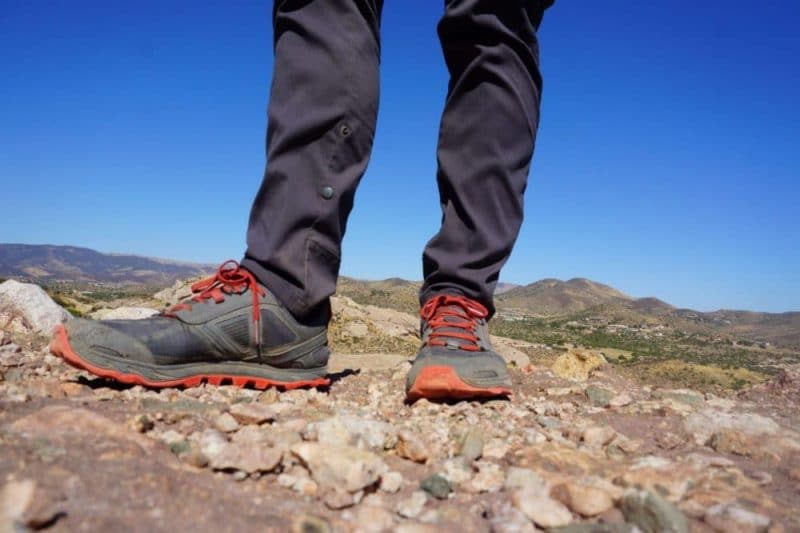
The Altra Lone Peaks come designed with a wide forefoot, neutral support, and zero drop. It fit like no other shoe that I had worn in the past.
Essentially, these shoes are flat. Zero Drop means that there is no height difference between the heel, and forefoot. A wide forefoot refers to the front of the shoe, sized for a wide space that allows your toes to spread out.
The fit of these shoes is more comfortable than the svelte dimensions of the Scarpa Mojito, and about as accommodating as the La Sportiva TX4. I find myself grateful for the wide forefoot, as it allows my feet to expand while hiking or running. The fit of the shoe also allows me to hike a little faster-I can transfer more energy to the front of my foot, allowing me to propel myself with more velocity.
Comfort
They say that comfort should be the most important factors when choosing the right pair of shoes. For the most part, I am in agreement-if you hate walking in your shoes, then what’s the point of wearing them?
Thus far, the Lone Peaks have proven to be exceedingly comfortable. Built with a thicc 25mm stack height, I could really feel the cushioning. I’ve worn these shoes for up to 20 miles at a time on strenuous hiking trails, and found the Lone Peaks to be comfortable the whole way through (see: Cloud’s Rest via Yosemite Valley)
Compared to many other approach shoes and hiking boots, walking around in the Altra Lone Peaks feels like I’m walking on marshmallows. Marshmallows made of Unicorn Dandruff. They’re dreamy.
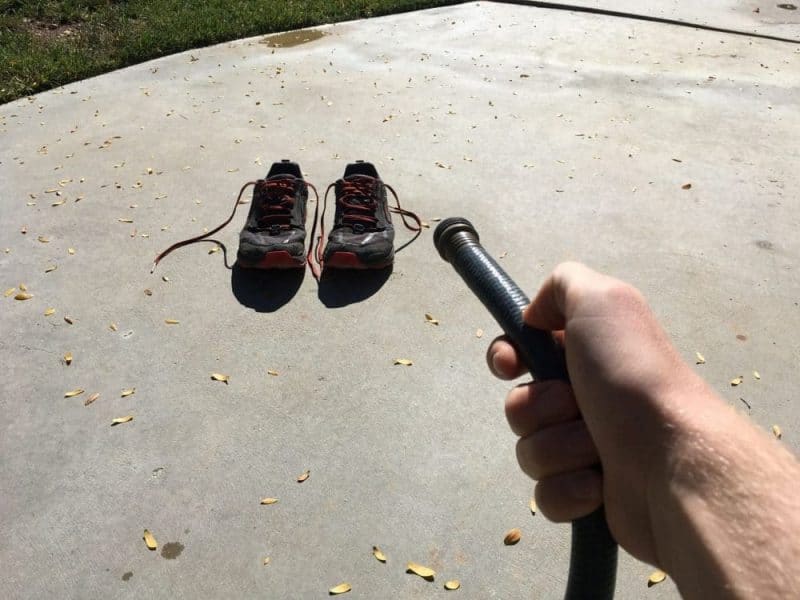
Breathability
With it’s mesh forefoot, the Altra Lone Peak 4 is designed for breathability. Porous qualities of the material allow venting, making them ideal on warmer days. As this material dries quickly, water crossings present no problem.
Bonus! Due to the great ventilation, my Lone Peaks do not smell as bad as my other hiking shoes.
One potential downside is that they may not be as adept for hiking on colder days. I’m a fair weather shoe reviewer-having only tested these in the summer and Fall. I cannot tell you if they are up to winter travel, but Trail Crampons do fit over them very well.
In cold temperatures, I’d probably opt for something more insulating, or maybe I’d just wear thicker socks.
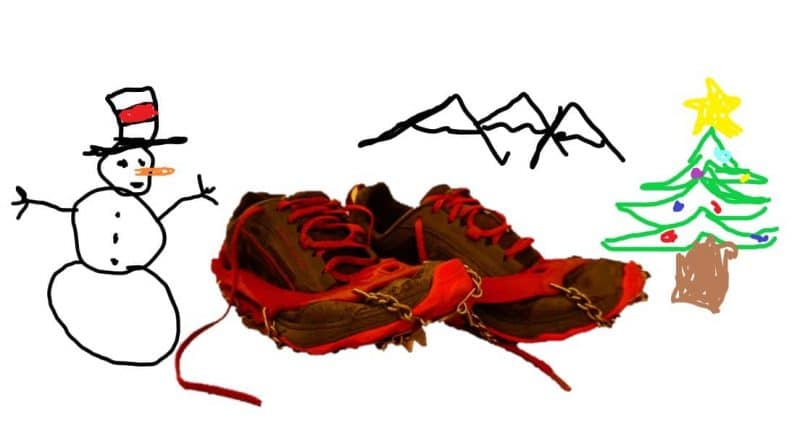
Durability
As of this review, I’ve accumulated well over 100 miles of use on the Altra Lone Peaks. I’ve ran, hiked, and scrambled through a variety of terrain and weather conditions, including stream crossings, snow fields, and Sierra Nevada granite slabs.
My Lone Peaks have held up very well-but not quite as well as I would have hoped. Through it all, the sole has remained intact, the laces look good as new, and the upper is nearly pristine. Yet, enough wear and tear has manifested to make me question the long term durability.
For one, the toe box has sustained a lot of scuffs. Frankly, this is expected, but it is made up of a foam material that may not be able to sustain a lot of long term damage.
Second, wear and tear in the forefoot area is progressing to a full blown hole. This is occurring right in the mesh, where the shoe is most vulnerable. Here is where my old Brooks Cascadias first blew out, so I am weary.
To be fair, I need to confess something. I’ve put the Lone Peaks through more abuse than any running shoe deserves. Thanks to my nigh unshakeable Crack addiction, these shoes have been seen jammed and twisted into tight spaces of numerous occasions. My poor habits have resulted in more wear in the forefoot area than might otherwise be expected.
Durability Update 12/23/2019: If you’re insistent on scrambling and/or technical climbing, wear approach shoes. Joshua Tree Monzogranite will put holes in anything with a mesh upper.
Weight
Often, a common complaint I’ve seen regarding the Lone Peaks is that they are Heavy. To that I say that this metric is highly subjective. Relative to my previous outdoor footwear choices, the Altra Lone Peak 4.0 is light as a feather.
Coming from a dude that has almost exclusively worn dense, clunky approach shoes, the Lone Peaks feel refreshingly lightweight. I barely notice them.
I suppose that dedicated runners may find the 1 lb, 3 oz. combined weight of the Lone Peaks to be downright brick-like, especially compared to more minimalist, barefoot style shoes. But to me, the Lone Peaks make me feel (ahem) light on my feet.
Hiking and Backpacking Performance
The Lone Peaks, as I’ve mentioned, are very popular with thru-hikers. I spotted plenty of folks wearing them on the John Muir Trail. Backpackers love em’, and I found them to be supportive with loads of up to 40 pounds.
These would be ideal on the John Muir Trail-namely for its abundant stream crossings. The Altra Lone Peaks don’t hold onto water for too long, drying out shortly after being submerged. Unless you’re hiking in a swamp, the Lone Peaks’ water crossing performance is more than adequate.
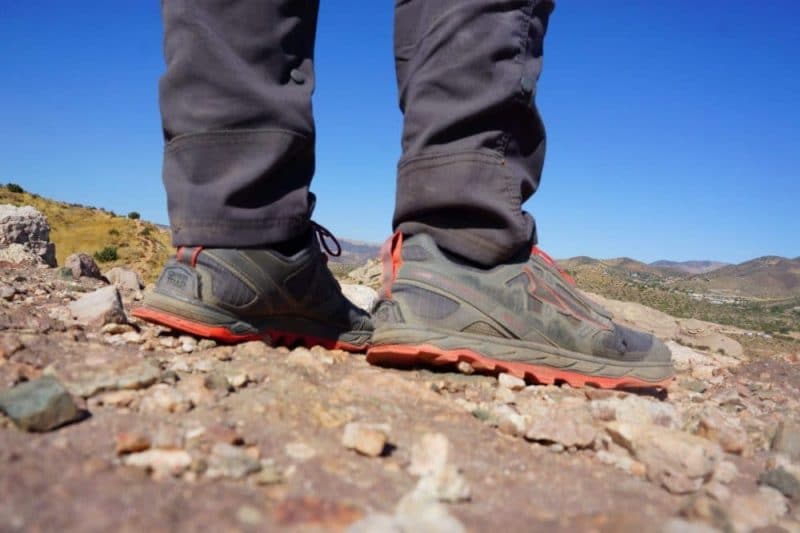
Included with the Lone Peaks are a Gaiter Trap-designed to secure gaiters firmly in place around your ankle. I thought this was a nifty, forward thinking design feature, until I learned that Gaiter Traps were nothing new. Shows you how much I know.
I don’t hike with gaiters much (or at all), but I did find the gaiter traps to be a slight nuisance at times. The traps can sometimes catch on debris, causing a potential fall. For the most part, they don’t get in the way, and I’m sure I’d appreciate them more, if I did actually wear gaiters.
For hiking and backpacking, the Altra Lone Peaks make for a great shoe. They won me over from day one, and I’ll likely be wearing pairs of Lone Peaks on future backpacking trips. If I’m day hiking, the Lone Peaks have become my go to shoe-replacing even my well-loved Scarpa Mojitos.
The comfort, low weight, and stability afforded by these shoes is exceptional, and it seems that Altra keeps improving on a tried and true design. It is worth it to any hiker or backpacker to give these shoes a chance.
I trust my Lone Peaks so much, that I have included them on my list of Essential Day Hiking Gear.
Scrambling and Climbing
What has turned out to be a welcome surprise, the Lone Peaks have an ability to grip well on rock slabs. I found that I could trust the sole rubber and construction to keep me stable on technical terrain.
For example, I was in Yosemite Valley to attend the annual Yosemite Facelift. A friend and I used the event as an excuse to climb Snake Dike-one of Yosemite’s classic moderate climbing routes.
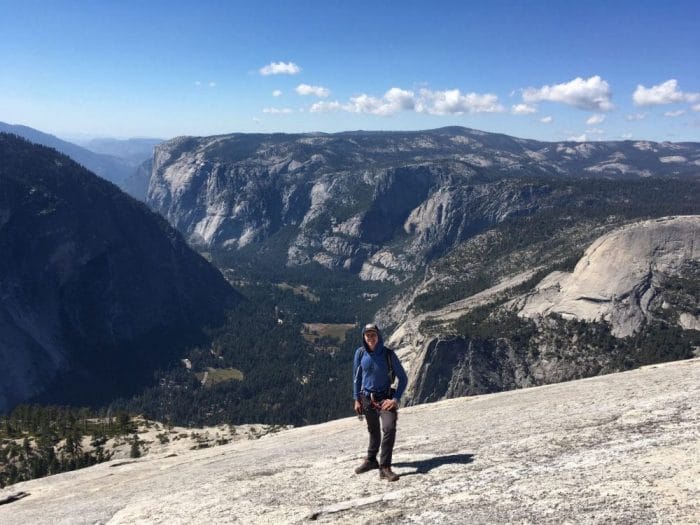
Now, climbing Snake Dike is not the hard part. The real crux of the day comes from all of the hiking and scrambling needed to both access the route, and descend from the summit of Half Dome-close to 15 miles worth.
Snake dike begins, and ends with low angle granite slab scrambling. It’s needed to reach the base of the route, and can feel tenuous-prompting some parties to rope up for the approach.
Once the 8 pitches of Snake Dike are climbed, parties must unrope, and scramble up 1000 more feet of 3rd-4th class slabs to reach the summit of Half Dome.
Descending via the Famous Cables route was no problem in the Lone Peaks. Despite the fact that I was not harnessed in to the cables, I could trust my feet to stay still.
I chose the Lone Peaks as my approach shoe, precisely because they were so lightweight. I did not want them to encumber me while wearing them in my climbing pack.
To my surprise, they performed decently on the slabs-far better than my old Brooks Cascadias would have. Despite all of the calf burning, slab hiking, I did not once feel unstable in the Altra Lone Peaks.
The Lone Peaks are no replacement for a dedicated approach shoe. Their design is far more ideal for running and hiking that it is for scrambling, toe jamming, or climbing. In a pinch, however, they will be a good choice.
Trail Running Performance
I can’t forget to mention how a pair of Trail Running shoes perform as, well, Trail Runners. When buying these shoes, I selected the Lone Peaks because they felt more natural on my feet. Out of the bunch, the Salomons felt like clunky golf shoes, and I had been discouraged by the durability of Brooks shoes.
Disclaimer: I’m not much of a runner. Take my opinion here with a grain of salt, and instead defer to runners that know what they are talking about.
Since owning these shoes, I’ve decided to give Running an honest try. My Lone peaks have ran on trail, road, and sidewalk, up to three miles at a time. They’ve seen a lot of use on a local collection of dirt trails, where they have served me well.
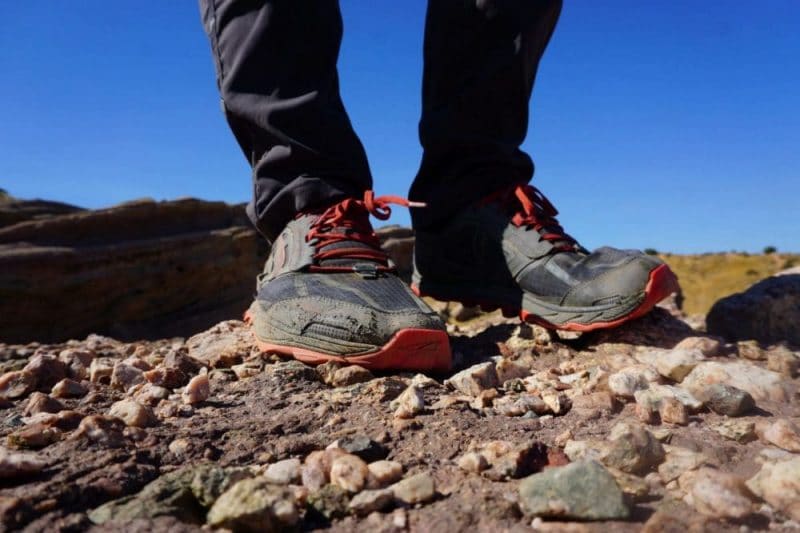
As a running shoe, the Lone Peaks perform well. They grip onto uneven trail, and instill enough surefootedness to get me up and down a hill. The tread is conducive to grip, now oriented in an arrow shaped design to enhance stability.
I haven’t once felt discomfort, and I’ve only experienced blisters when I was first breaking them in. After a run, my feet can feel a little sore. I experience this more after road running than I do on trails.
The Lone peaks are not to blame-rather, it’s my amateurish cadence and running form-a quality that I can improve upon.
Overall, my experience with the Altra Lone Peak 4 has had a net positive impact on my life. They have inspired me to improve my health and fitness, and become a better runner. All things considered, this has won these shoes more brownie points.
Conclusion-tl;dr
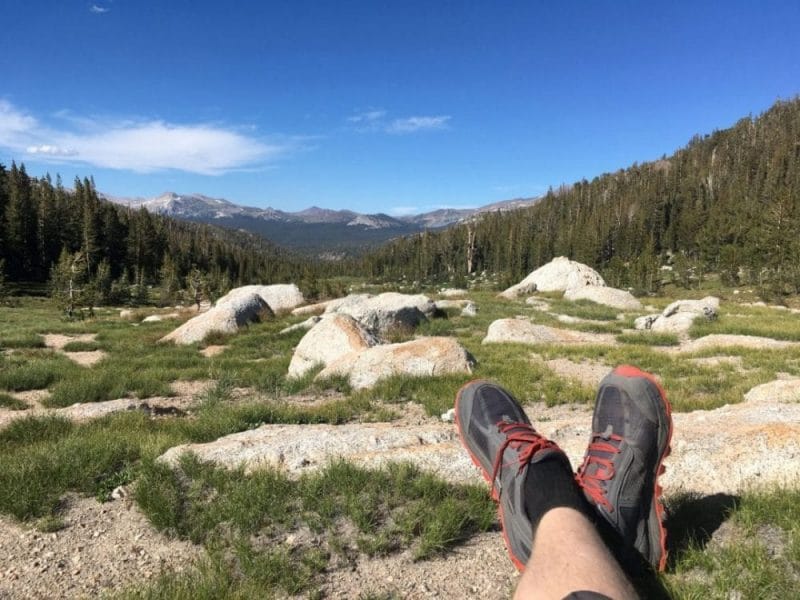
The Altra Lone Peaks have a well built reputation as quality hiking, backpacking, and trail running shoes. They are lightweight, dry quickly, and provide a lot of support on both trails and pavement, and they grip slick rock better than I would have expected.
I find the Lone Peak 4 to be very comfortable, and ideal for long days of hiking and backpacking. Generally retailing for around $100 American, the Altra Lone Peaks are a cost effective shoe that can cover all of your bases.
I’m an Altra convert, and I’m excited to see what other shoes that are offered. For now, my Lone Peaks have become my go-to shoe for any terrain, and many different outdoor activities.
Check Prices
Amazon
Backcountry
- The Best Campsites Around Big Bear California - February 26, 2021
- Hiking to the Hollywood Sign Via the Brush Canyon Trail - July 13, 2020
- Dirt Cheap Hiking and Backpacking Gear: The Most Affordable Gear on the Internet - July 4, 2020
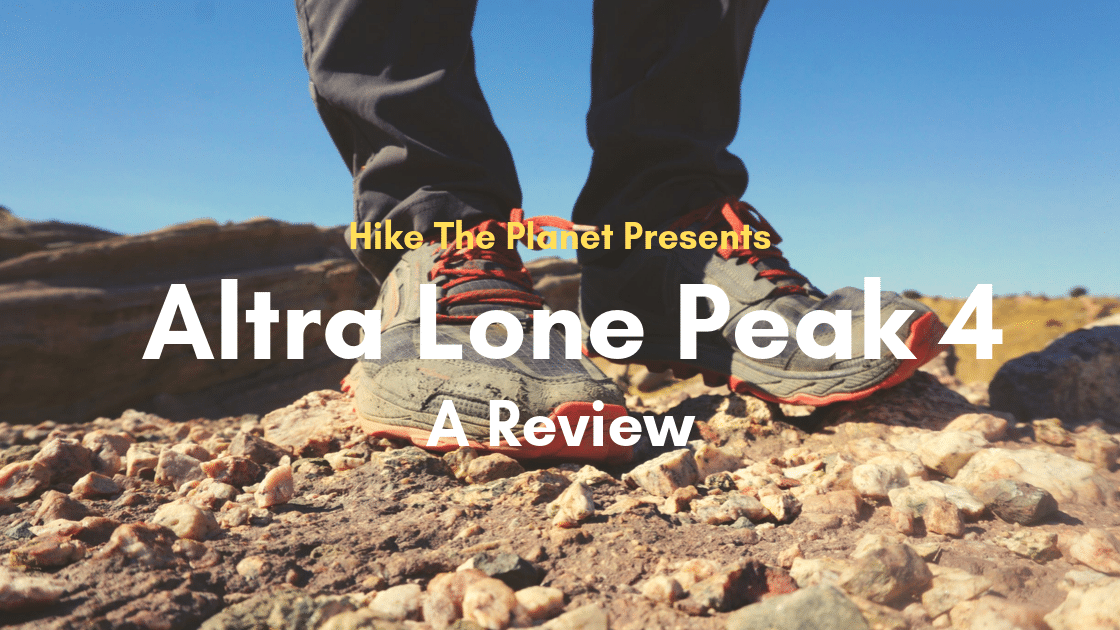

1 thought on “Review: The Altra Lone Peak 4”
Comments are closed.